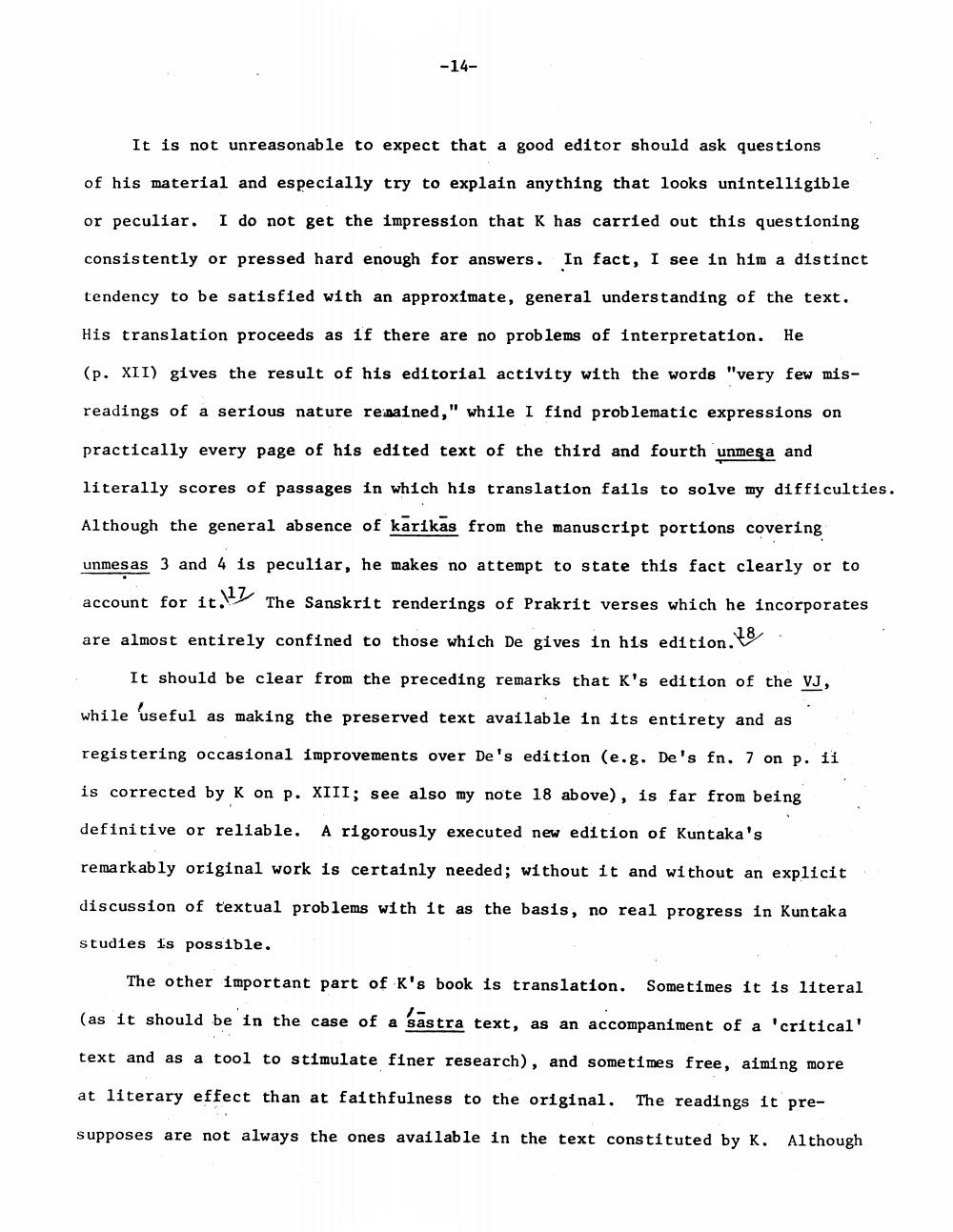________________
-14
It is not unreasonable to expect that a good editor should ask questions
of his material and especially try to explain anything that looks unintelligible
or peculiar.
I do not get the impression that K has carried out this questioning
consistently or pressed hard enough for answers.
In fact, I see in him a distinct
tendency to be satisfied with an approximate, general understanding of the text.
His translation proceeds as if there are no problems of interpretation. He
(p. XII) gives the result of his editorial activity with the words "very few mis
readings of a serious nature renained," while I find problematic expressions on
practically every page of his edited text of the third and fourth unmesa and
literally scores of passages in which his translation fails to solve my difficulties.
Although the general absence of karikas from the manuscript portions covering
unmesas 3 and 4 is peculiar, he makes no attempt to state this fact clearly or to
account for it.
The Sanskrit renderings of Prakrit verses which he incorporates
are almost entirely confined to those which De gives in his edition.
It should be clear from the preceding remarks that K's edition of the
while useful as making the preserved text available in its entirety and as
registering occasional improvements over De's edition (e.g. De's fn. 7 on p. ii
is corrected by K on p. XIII; see also my note 18 above), is far from being
definitive or reliable. A rigorously executed new edition of Kuntaka's
remarkably original work is certainly needed; without it and without an explicit
discussion of textual problems with it as the basis, no real progress in Kuntaka
studies is possible.
The other important part of K's book is translation. Sometimes it is literal
(as it should be in the case of a sastra text, as an accompaniment of a 'critical'
text and as a tool to stimulate finer research), and sometimes free, aiming more
at literary effect than at faithfulness to the original.
The readings it pre
supposes are not always the ones available in the text constituted by K. Although




